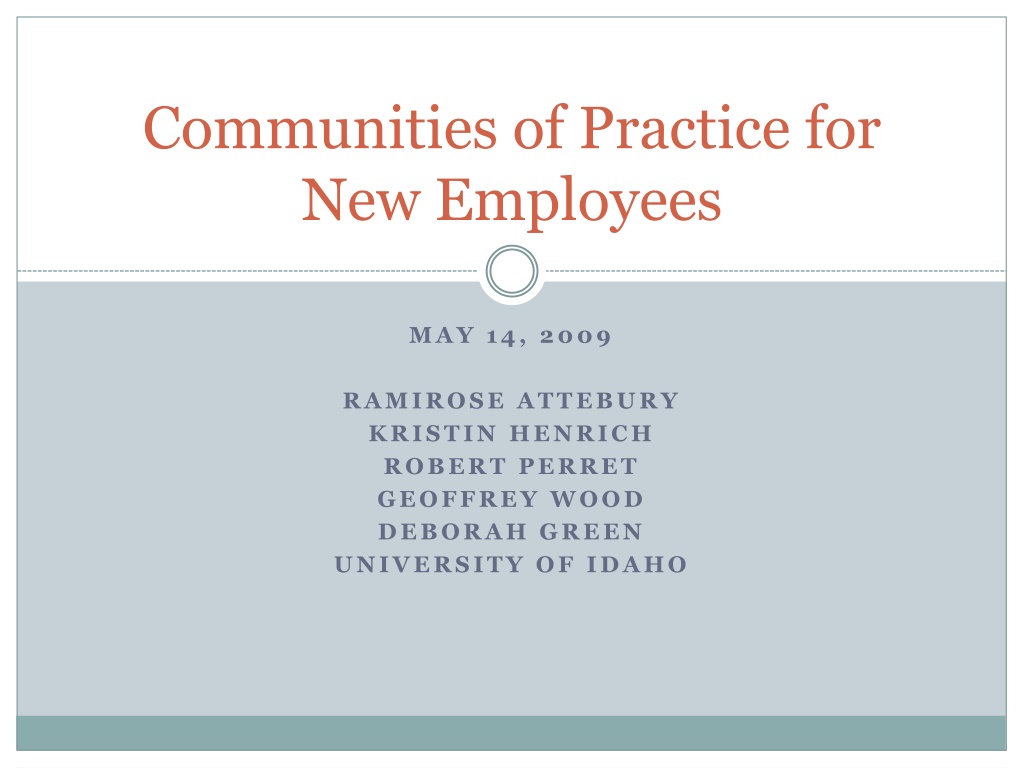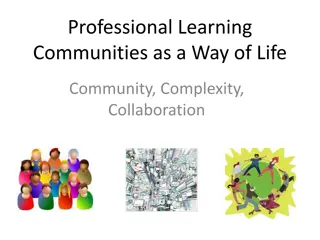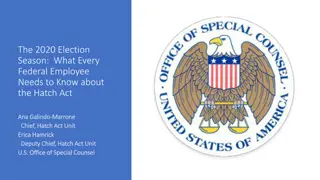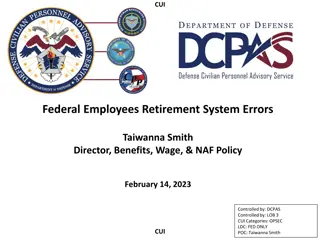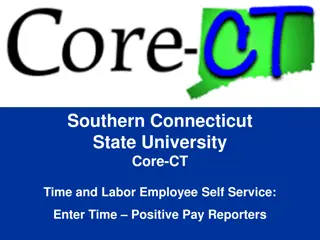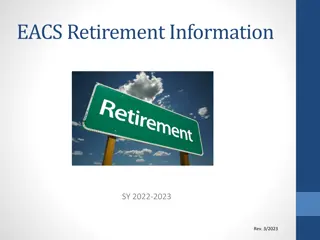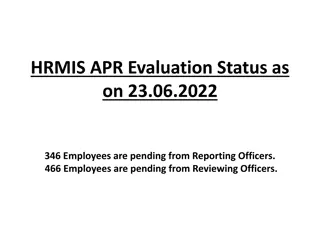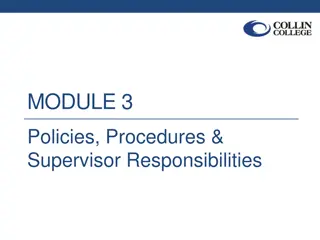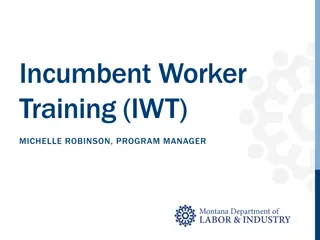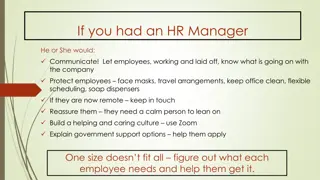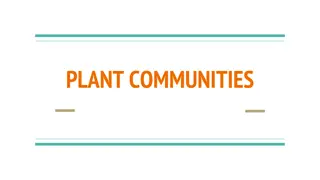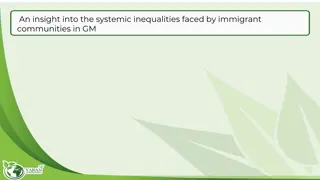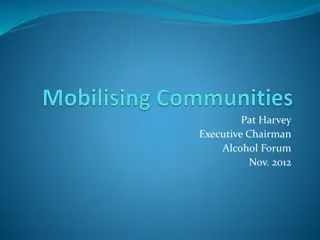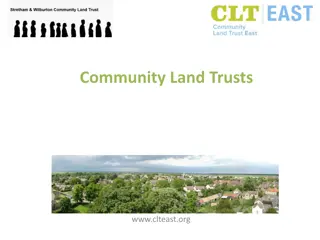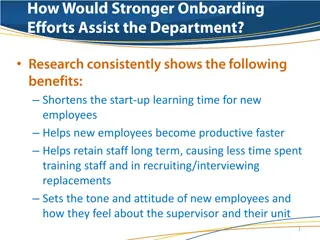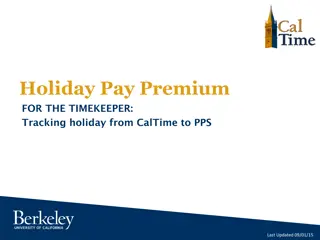Understanding Communities of Practice for New Employees
Explore the concept of Communities of Practice (CoP) through a case study at the University of Idaho, focusing on benefits, characteristics, implementation, and activities within the CoP. Discover how CoPs offer a space for collaboration and knowledge sharing among members, aiding in professional development and combating isolation.
Download Presentation

Please find below an Image/Link to download the presentation.
The content on the website is provided AS IS for your information and personal use only. It may not be sold, licensed, or shared on other websites without obtaining consent from the author. Download presentation by click this link. If you encounter any issues during the download, it is possible that the publisher has removed the file from their server.
E N D
Presentation Transcript
Communities of Practice for New Employees MAY 14, 2009 RAMIROSE ATTEBURY KRISTIN HENRICH ROBERT PERRET GEOFFREY WOOD DEBORAH GREEN UNIVERSITY OF IDAHO
Topics Covered Definition of Community of Practice (CoP) CoP at the University of Idaho Benefits of a CoP Creating a CoP CoP at Your Library (Discussion groups)
Definition/Characteristics A joint enterprise understood and continually renegotiated among members. Binds members as a social entity through involvement in common activities. Members have a common background or interest. Members have a common goal or purpose. Informal relationship based on trust and group identity Voluntary membership (Source: Hildreth, Paul and Chris Kimble. Knowledge Networks: Innovation through Communities of Practice. Hershey, PA: Idea Group Publishing, 2004.)
CoP at the University of Idaho Five new tenure-track librarians hired in one year Evolved out of desire for mentorship toward research and publishing Planning meeting with expert in CoPs Group goals and expectations defined by larger faculty group Refined by new librarians who drafted charter document and group agreement Charter document approved by larger faculty group: the new Community of Practice
CoP at the University of Idaho Membership completely voluntary Members of CoP agreed to meet once a month for an hour to discuss research ideas in non-judgmental environment Listserv created to facilitate discussion among members Meetings consist of two parts Half hour presentation of research by one member Open forum for other members to discuss research ideas or problems
Benefits of CoP Safe place to gain feedback for research ideas or projects Ability to find collaborators for projects Sharing information about calls for proposals or projects currently underway Ensure communication among librarians from different library departments Combats isolation and worry connected to publishing requirements
Creating a CoP Task and Maintenance Group should: manage itself assign jobs to members plan and schedule work take action to remedy problems 75 percent of effort get the work done constant improvement 25 percent of effort effective decision making implement decisions resolve problems resolve internal conflicts
Creating a CoP: Lessons Learned Need Small group of founding members Make sure goals and expectations are clearly expressed Should not create additional burden for members If gap in presentation schedule, do conference recap Presenting should be optional Optional not mandatory attendance Don t be afraid to reevaluate and make changes if necessary
Questions for Discussion Do you think a CoP would work at your library? If yes, how would you make it work? If no, how could you apply these principles to another learning group? Keeping current with the profession Writing groups Article discussion groups Do you currently have a successful learning organization? What suggestions do you have to share with the group?
